Throughout the COVID-19 pandemic, many people, including members of our campus community, have banded together to sew much-needed face masks.
These collaborations reflect large-scale sewing efforts documented in the archives. During World War II, the Dayton Area Chapter of the American Red Cross (MS-121) did their bit by sewing, knitting, and crocheting. They created items for soldiers at war, as well as for civilians on the home front.
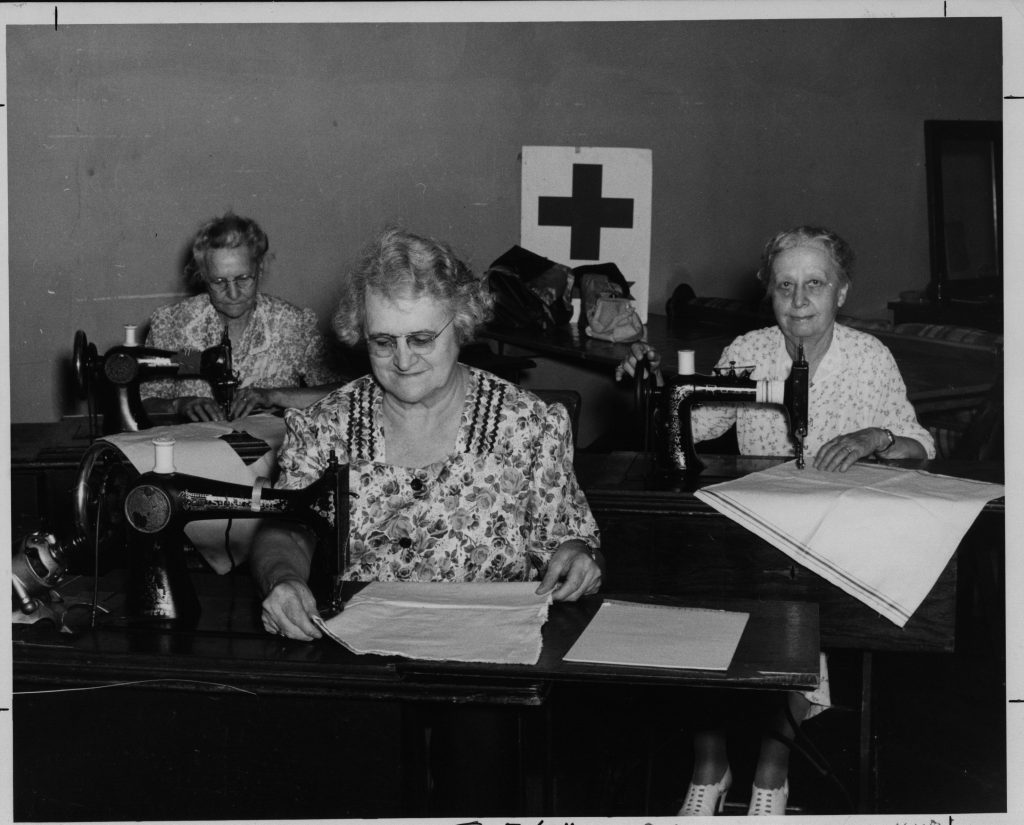
(MS 121, Box 57, File 7)
Volunteers helped the Red Cross manufacture and distribute vast quantities of handmade goods. These ranged from bandages and baby clothes for local hospitals, to gloves and kit bags to send to the troops.
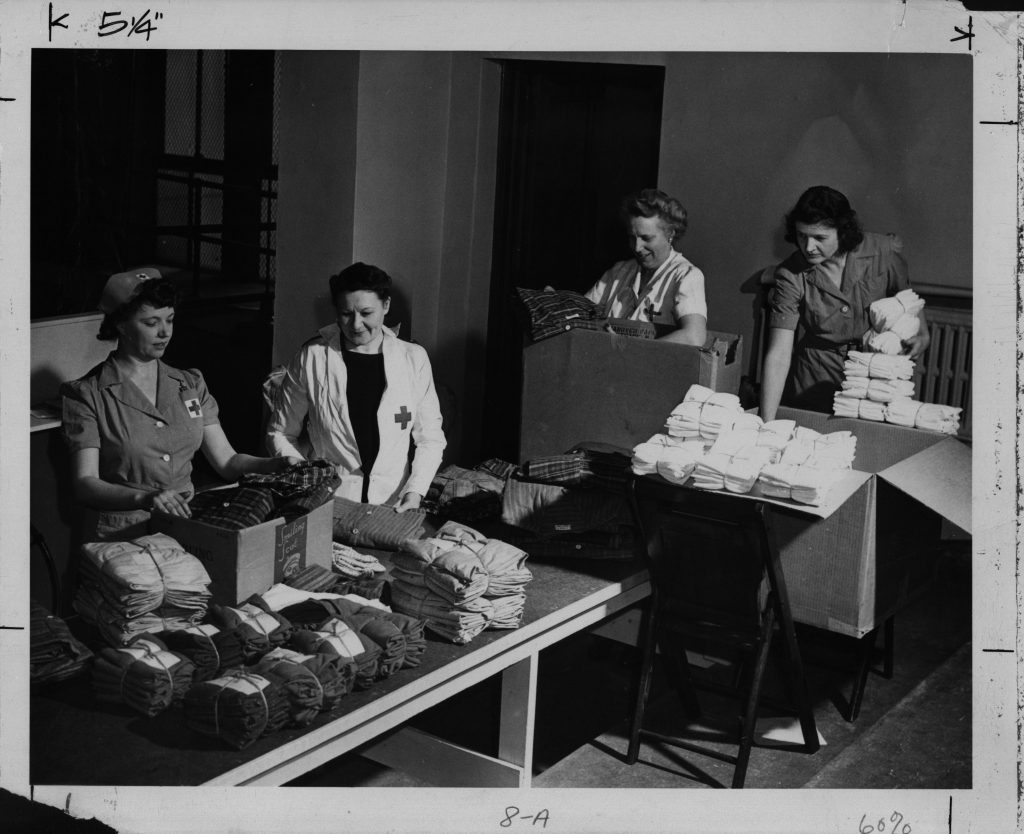
(MS 121, Box 57, File 7)
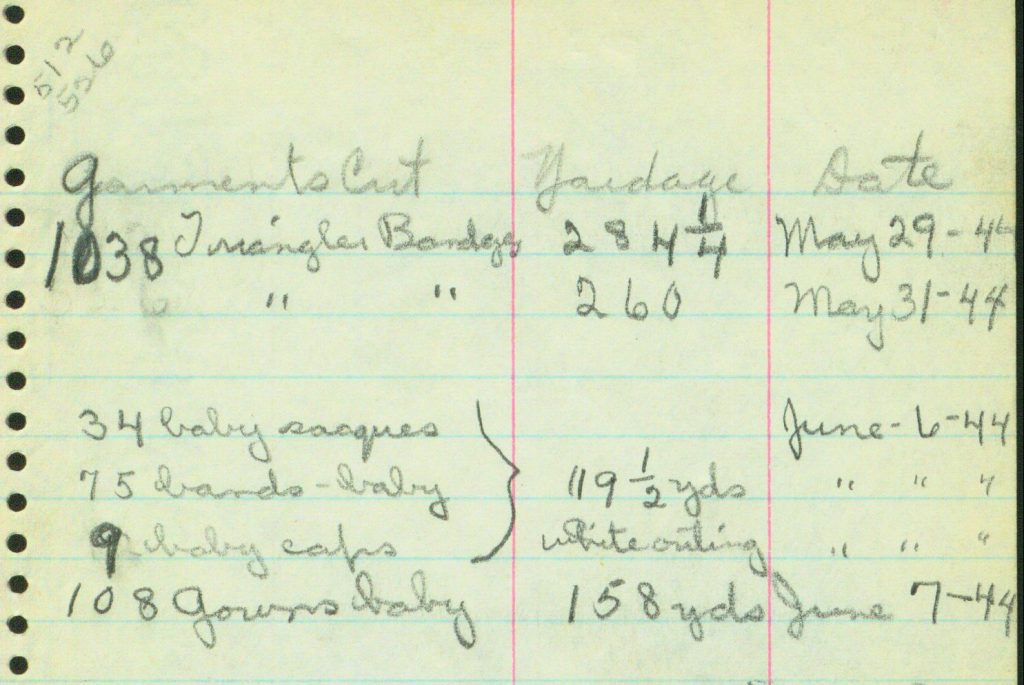
(MS 121, Box 75, File 1)
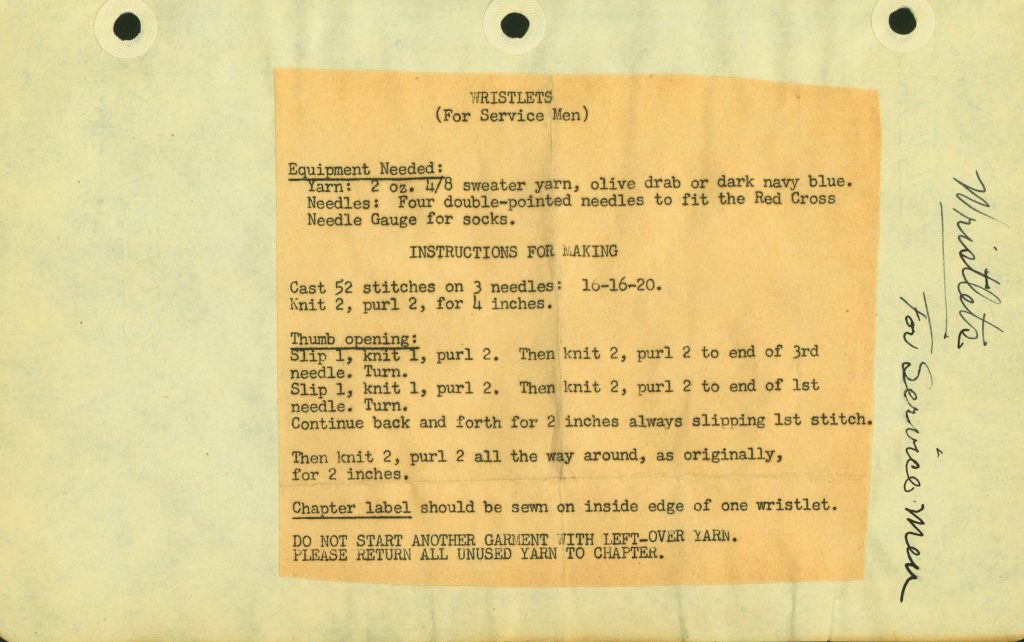
(MS 121, Box 75, File 3)
Volunteers documented their efforts in a “Time Book,” recording the number and types of garments they cut each day, as well as how many yards of fabric they used. Though the seamstresses were volunteers, they completed work on a seemingly industrial scale.
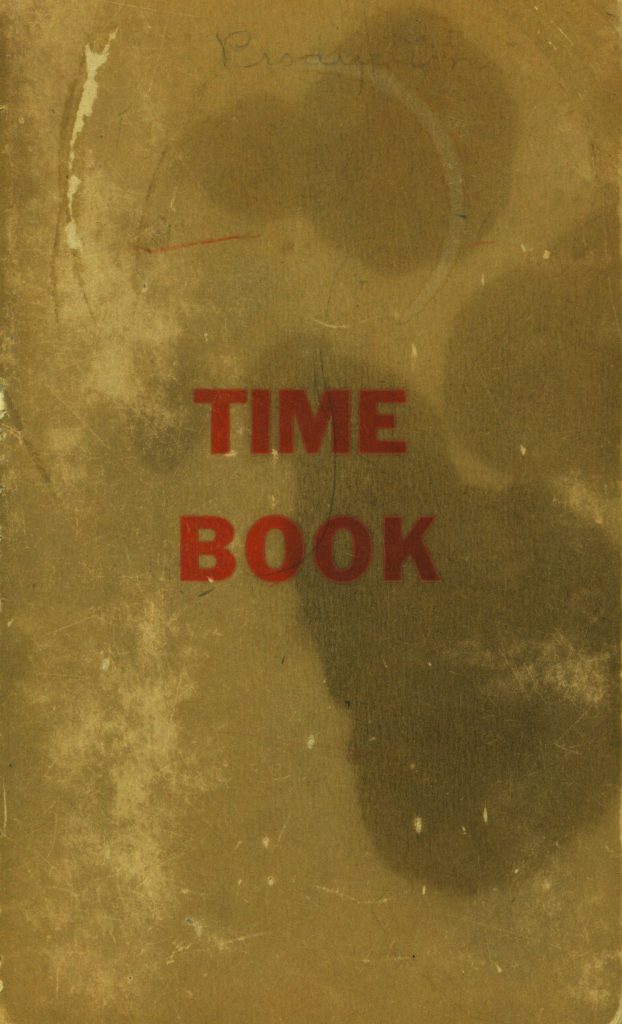
In June of 1944, the chapter set out on a mission to manufacture 28,800 kit bags.
Over the course of the summer of 1944, and into the month of September, volunteers manufactured hundreds of bags a day. Some days saw a total of more than a thousand bags made. They set their record on July 6, 1944, when they produced 1,700 bags.
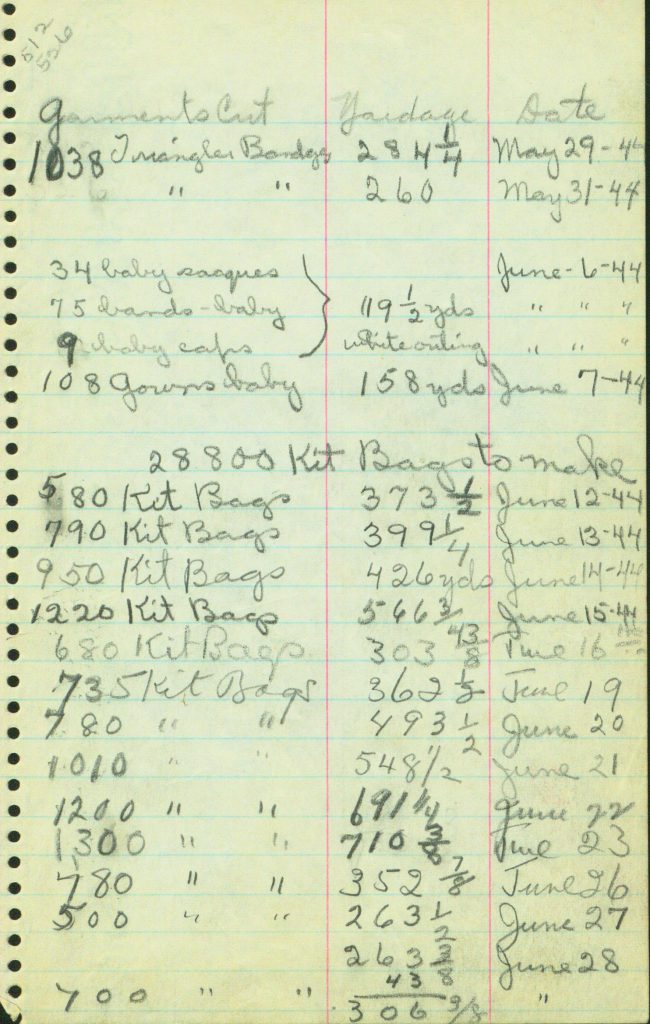
MS 121, Box 75, File 1 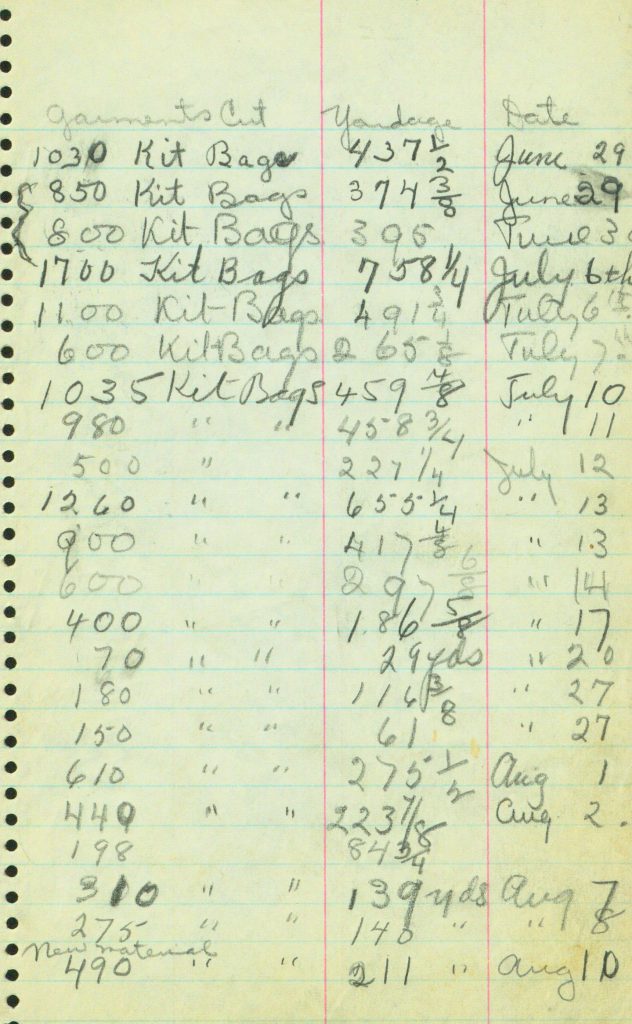
MS 121, Box 75, File 1 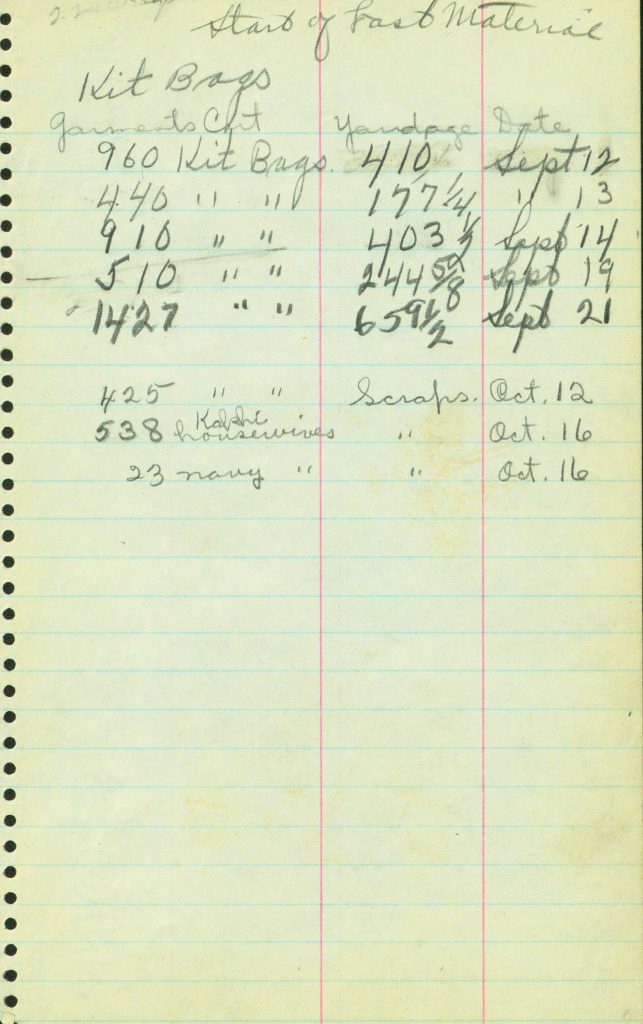
MS 121, Box 75, File 1 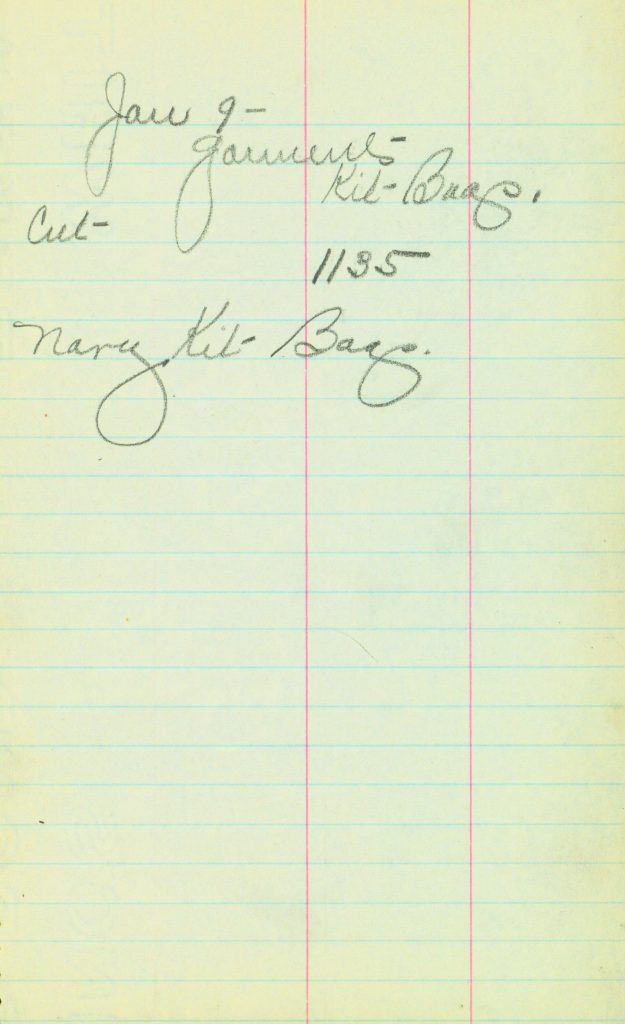
MS 121, Box 75, File 1
All told, the project used over 14,000 yards (close to 8 miles) of fabric.
With the fabric scraps left over from the kit bags, the Red Cross workers manufactured “housewives,” or sewing kits, to match.
Instructions for a sewing kit appear in a collection of patterns created by the Red Cross.
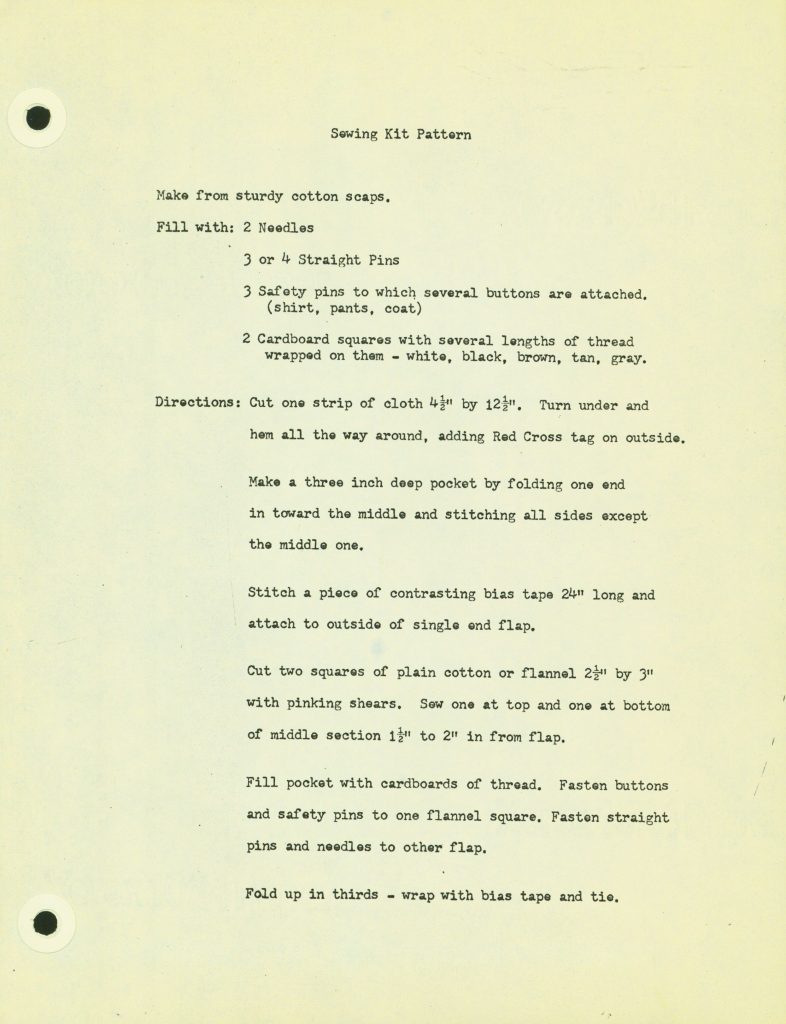
The sewing kit would have looked very similar to the small pouch that appears in the upper left corner of this World War I-era Red Cross care package for soldiers.
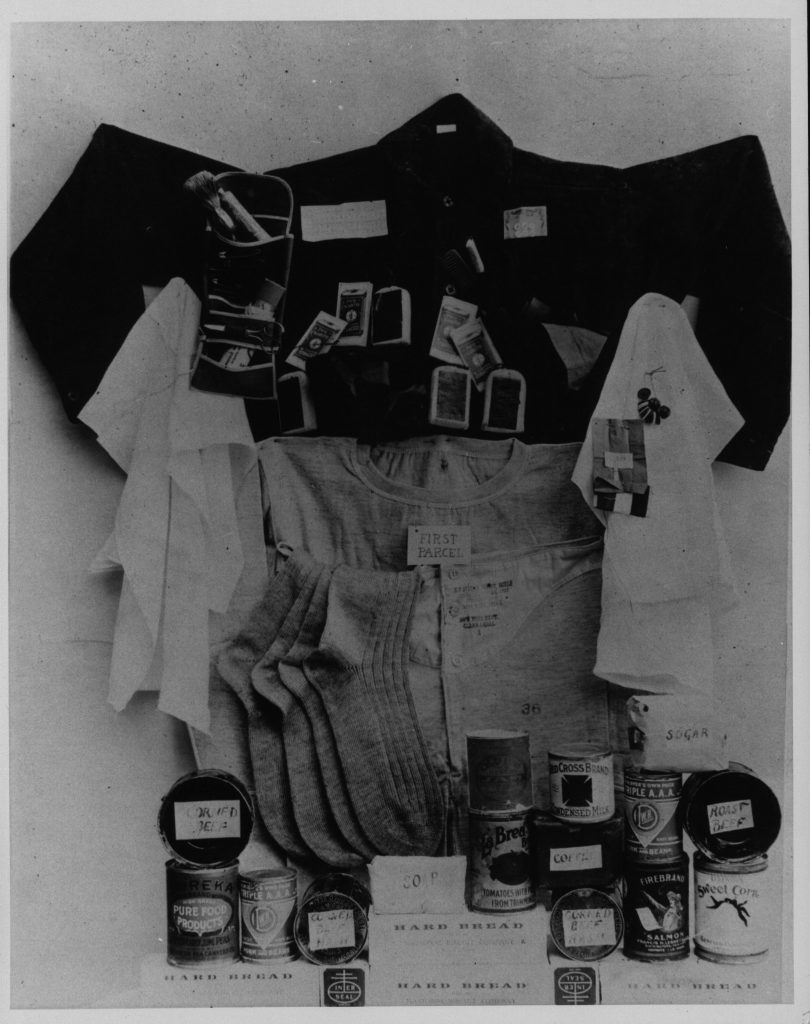
Today, those leftover scraps would be great for masks!
Post by Megan O’Connor, student worker
